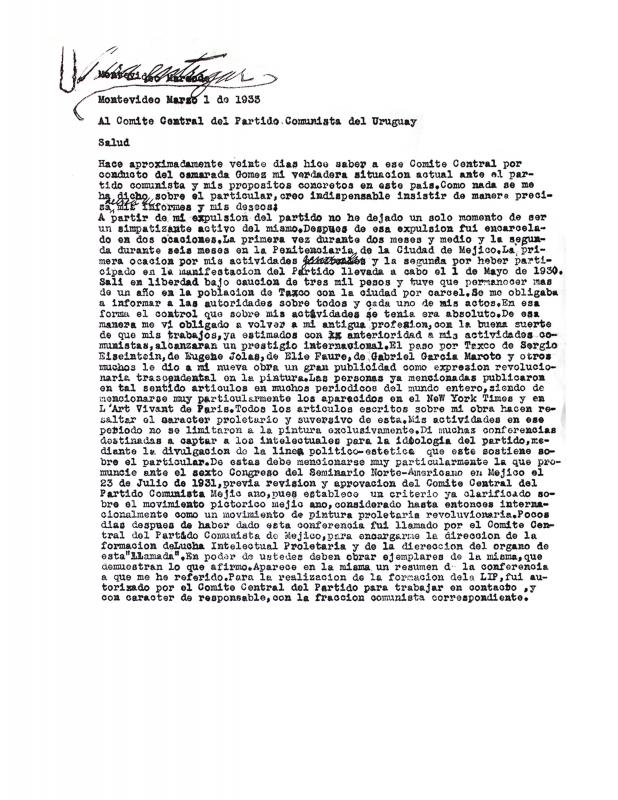Whenever he lectured, David Alfaro Siqueiros (1896–1974) compared “individualistic” and “single-copy” easel painting to the group painting (and sometimes multi-copy exercise, as in the case of political posters) proposed by the Bloque de Pintores Murales de Los Ángeles [Los Angeles Mural Painters’ Block] in California.
Rather than the handheld brush, watercolors, pastels, or the traditional fresco, Siqueiros suggested using the “compressed air chisel” (to prepare the surface of walls and create texture), the “cement gun” for the mechanical application of (white or ordinary) cement, and an “air gun” to spray paint. The artist was encouraged to develop his own style as he used the latter tool. The Mexican painter even used this system with a cement mixer to which the color had already been added, as in the traditional fresco technique. He would finish off the final layer of wax with a “gasoline or oxygen blowtorch,” just one in a range of industrial tools and instruments.
Siqueiros also used electric projectors to project images directly onto the wall as an aid to sketching the shapes and figures involved. He also used still and movie cameras to help document the work as it progressed and interpret the forms as they took shape, and to provide a prior record of the reality of the social struggles taking place in the world. It is interesting to note that Siqueiros’s emphatic endorsement of “modernity” in his use of photography is, in fact, a throwback to a technique used by painters in the nineteenth century. He also considered the “scientific” study of the psychological effect of colors and their combinations to be part of the technical revolution, as in the study of forms and textures that might help to decide how painting can best create a mood that is conducive to revolutionary feelings.
Siqueiros thought an artist should work in illegal conditions to refine the use of these techniques and make them more politically effective, something he usually defined as a “dialectical-subversive style.”
[As complimentary reading, see in the ICAA digital archive the letter that Siqueiros wrote to the Uruguayan Communist Party Central Committee: “Al Comité Central del Partido Comunista del Uruguay” (doc. no. 1238917)].

